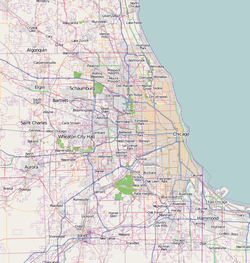Chicago Beach Apartments | |
 Scholars Corner Apartments | |
| Location | 5100 South Cornell Avenue, Chicago, Illinois |
|---|---|
| Coordinates | 41°48′08″N87°35′12″W / 41.8022°N 87.5868°W |
| Built | 1929 |
| Architect | Pearson, Warner M.; Beachview Building Corp. |
| Architectural style | Art Deco |
| MPS | Hyde Park Apartment Hotels TR |
| NRHP reference No. | 86001193 [1] |
| Added to NRHP | May 14, 1986 |
The Chicago Beach Apartments, built in 1929, are located at 5100 South Cornell Avenue in Chicago, Illinois, US. [2] Landfilling and other reconfiguration of the lakefront means that the building is not as close to a beach as it once was. Currently known as Scholars Corner Apartments, the building was added to the National Register of Historic Places on May 14, 1986. [3]


